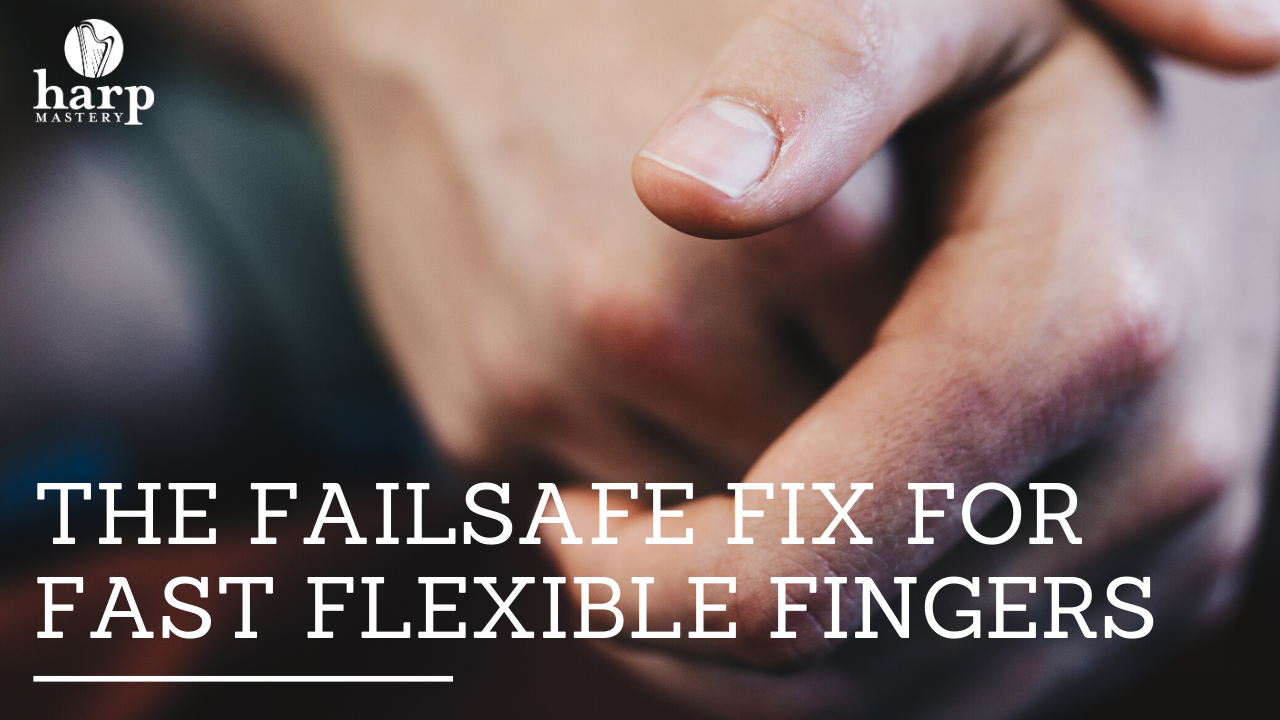The Failsafe Fix For Fast Flexible Fingers

What harpist wouldn’t want fast, flexible fingers? Just imagine if your fingers were agile and even sounding, so that your music would have flash and sparkle.
You may be like many harpists in search of the elusive trick to a facile and nimble technique. You might even believe that you’ve tried everything, and you will have to accept the fact that your fingers will never get any faster than they are now.
Don’t give up yet. You may be ignoring the time-tested solution, one that’s so obvious you are likely to overlook it. In fact, you might have already tried it and decided it didn’t work, because you didn’t understand how it works.
What if I told you that in less than 15 minutes a day, in the course of one month you could change your belief forever, you could see improvement in your fingers and you could play faster and more fluidly? You would probably want to know what this magical fix is, right? It’s the best - and for some unenlightened harpists, it’s the dullest - solution. In a word, it’s scales.
Many harpists don’t spend much time practicing scales because it feels like when you’ve played one, you’ve played them all. On most instruments fingerings are specific to each key, so players practice their scales to become familiar with the finger patterns needed for each key. On the other hand, harp scales don’t require different fingerings for each key. The sharps or flats required are done with our levers or pedals; the finger patterns stay the same.
Don’t make the mistake of thinking you’re exempt from doing regular scale practice on the harp. Practicing scales is always valuable for finger dexterity, agility and evenness. Scale passages occur in nearly every piece we play so when your scales are automatic and smooth, learning music and getting it up to tempo is a quicker and easier process.
Playing scales is also an excellent way to keep reviewing the various key signatures for major and minor scales and modes. Key signatures aren’t merely things that are “good to know.” Knowing your scales and key signatures is crucial to fluent sight reading, speedy memorization and improvisation.
Let’s begin your scale “refresher course” by reminding you of the usual scale fingering on the harp. Standard scale fingering is two groups of four fingers for a one octave scale (4321, 4321). For each additional octave you add to your scale you add a group of three fingers and a group of four fingers (321, 4321). Truthfully, the order of the finger groups doesn't matter. Some harpists like to begin with the two groups of four at the bottom of a scale while others prefer to put it at the top. It is helpful if you are consistent with your fingering, though, so it can be automatic for you.
That being said, practicing alternate scale fingerings can help you develop more flexibility and agility. Starting scales on a finger other than 4 or 1 can help strengthen a weak second or third finger. Playing a scale with only three fingers is also useful, and those three fingers could be 321 or 421 or even 432. (That’s right - no thumbs!)
If you have been neglecting your scales of late, I urge you to refresh them now. If you’ve never spent much time practicing scales and would like to know how to practice them to get the most benefit, I would like to help.
You can request a free PDF in which I review the standard scale fingering and some more unusual and fun ones as well. Just click the link below to get your copy.
Next week, here on the blog, I will review the four practice criteria for scales, exactly what to be looking for in your scales practice and why. I guarantee you haven’t thought about your scales this way before, and I think you’ll find this information extremely helpful.
50% Complete
Two Step
Lorem ipsum dolor sit amet, consectetur adipiscing elit, sed do eiusmod tempor incididunt ut labore et dolore magna aliqua.